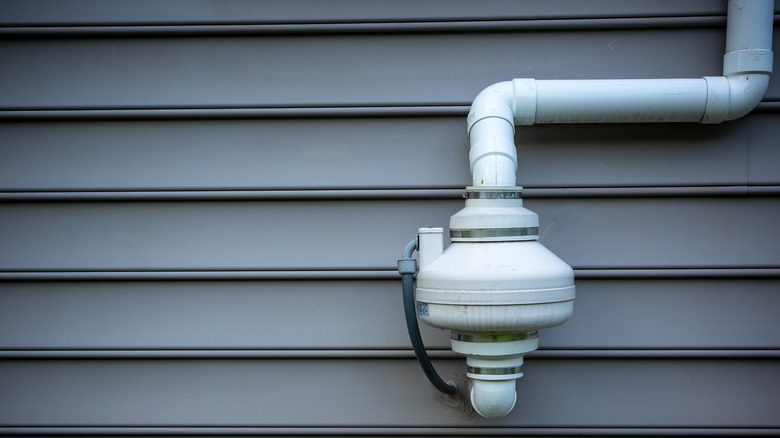Essential Steps To Protect Your Home And Prevent Radon Exposure
We may receive a commission on purchases made from links.
Radon is often thought of as a household boogeyman, and for good reason. It's an odorless, invisible, and an undetectable danger that can be lurking in your home. Radon is a natural byproduct of radioactive metals decaying underground and can accumulate in homes at dangerous levels, eventually becoming hazardous. It's also a leading cause of lung cancer, second only to smoking.
While you can't control your home's exposure to radon, you can take steps to prevent it and lower radon levels in your home. A good place to start is with regular radon testing or investing in a radon detector, like the highly-rated Airthings Corentium Home Radon Detector on Amazon. Radon levels ebb and flow, so continual monitoring or testing at least every two years is recommended to provide a baseline assessment of your home's average radon exposure.
It's important to note that radon levels can also fluctuate throughout your home, which means radon could be lurking in your attic or you could be exposed to higher levels of radon if you spend a lot of time in your basement. Similarly, home remodels can affect radon levels depending on how they affect the ventilation.
Interventions to prevent radon in your home
Monitoring your home's radon levels and knowing what to do if radon is present in your home is key to preventing overexposure. Radon is measured in picocuries per liter of air (pCi/L), and while it isn't ideal at any level, the EPA recommends taking action to prevent radon if levels start to exceed 2 pCi/L. If your home's radon levels are consistently between 2 and 4 pCi/L, it's a good idea to call a professional radon inspector to evaluate your home to determine an action plan to prevent radon levels from increasing. Interventions can include simple steps like sealing up cracks and increasing ventilation throughout the home.
If radon levels exceed 4 pCi/L, it's time for significant interventions. Certified radon professionals may recommend a radon mitigation system to be installed in your home. These systems utilize sub-slab depressurization to direct gasses released below your home through pipes and out via an exhaust vent. You should continue testing for radon to ensure the system is working to reduce radon to acceptable levels. Even if your home's radon levels have never been high, it is important to keep an eye on them as they can spike at any time.

